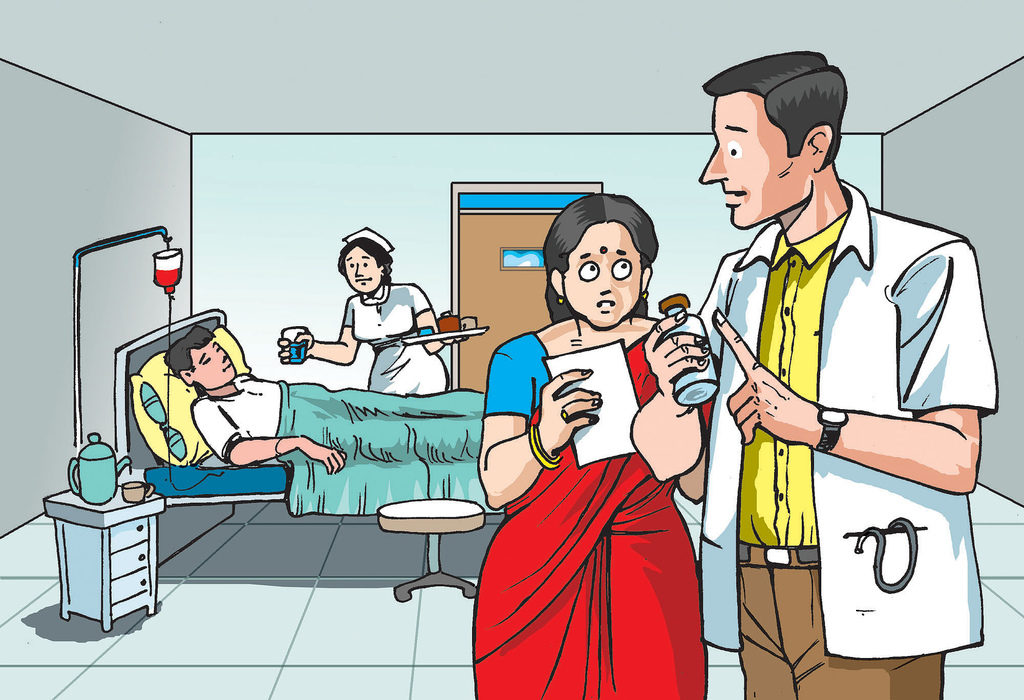A study published in Proceedings of the National Academy of Sciences (PNAS) found that medical students and residents held false beliefs about biological differences between races. These beliefs were correlated with failure to provide the recommended pain management treatments to Black people.
“Black Americans are systematically undertreated for pain,” the authors write. “This work reveals that a substantial number of white laypeople and medical students and residents hold false beliefs about biological differences between blacks and whites and demonstrates that these beliefs predict racial bias in pain perception and treatment recommendation accuracy.”

Access to healthcare remains an issue for people of color, and, research suggests that when people of color do access healthcare, they are provided inadequate treatment. For example, Black people wait twice as long as White people for kidney transplants, and Black women with breast cancer are 67% more likely to die than their White counterparts. This persists for children as well—the mortality rate for Black infants is 2.5 times higher than for White children.
Existing studies show that Black Americans receive fewer prescriptions for pain management medications, and when they do, they receive lower doses or less effective medications. A previous study of actual emergency room practices showed that this occurs despite equivalent self-reports of pain levels. And a study of approximately 1 million children with appendicitis found that Black children were less likely to receive any pain medication, and when they did, it was often not the recommended type and dose. A study examining patients with metastasized cancer found that only 35% of people of color received the recommended pain management prescription.
These effects persisted even when explicitly racist beliefs were controlled. According to the researchers, “It is likely not the result of racist individuals acting in racist ways.” Although one could quibble with the researchers’ definition of racism, the research shows that these effects are not due to overtly racist choices—but rather to implicit biases.
The researchers for this current study wanted to determine if people with medical training—in the process of becoming doctors—believed some of the false statements or myths about biological differences between races. They also wanted to determine if belief in these statements influenced perceptions of how much pain an individual was experiencing.
Laypeople and medical students and residents were asked how much they believed certain statements, such as “Blacks’ skin is thicker than whites’” and “Blacks’ nerve endings are less sensitive than whites’”. Participants were then provided with cases in which either Black or White patients were experiencing pain, and asked what treatment they would provide.
The results showed that there are pervasive false beliefs, even among medical residents who have had years of medical school, about biological differences between White people and people of color. In fact, the researchers go so far as to call these beliefs “false and fantastical”—they have no basis in reality. 50% of the medical personnel endorsed at least one myth about biological racial differences (notably, 73% of laypeople did so).
For medical personnel who were people of color, belief in these myths did not correlate with inadequate treatment recommendations or with rating pain differently between races.
However, for White medical personnel, those who endorsed more false-beliefs rated Black people as experiencing less pain than White people and were also more likely to recommend inappropriate treatment (i.e. failing to prescribe pain medication to Black people or prescribing at a lower dose).
A limitation of this study is that it utilized case vignettes rather than data about practices with real clients. However, this is a generally accepted approach in difficult to study situations, and previous literature has already established that these differences persist in the real world. The researchers also acknowledge that overprescription may be a problem, particularly for White patients, but that it is not responsible for the effect seen here, as the responses to the case vignettes demonstrate a failure to meet the recommended pain management techniques for people of color.
It is also important to note that as students received more training, their accuracy increased—medical residents were more likely to prescribe the appropriate medication than first-year medical students, for instance. However, this accuracy increased for both Black and White patients, meaning that it did not resolve the racial treatment disparity.
Beliefs about biological differences between people of color and White people have historically been espoused by doctors and researchers throughout the history of the United States. These beliefs have been used to justify horrific medical experimentation, as well as to reify the institutions of slavery and Jim Crow laws. The current racial biases identified in this study—the false beliefs that Black people feel less pain and are biologically stronger than White people—are both continuations and direct results of this history of systemic oppression.
In the United States where only about 7.5% of doctors are African-American, the biases of White doctors have a large effect on the treatment people of color receive. This study demonstrates that medical schools need to do more to dispel myths about the biological differences between races so that adequate treatment can be provided to patients, no matter their race.
****
Hoffman, K. M., Trawalter, S., Axt, J. R., & Oliver, M. N. (2016). Racial bias in pain assessment and treatment recommendations, and false beliefs about biological differences between blacks and whites. PNAS, 113(16), 4296–4301. doi: 10.1073/pnas.1516047113 (Abstract)














